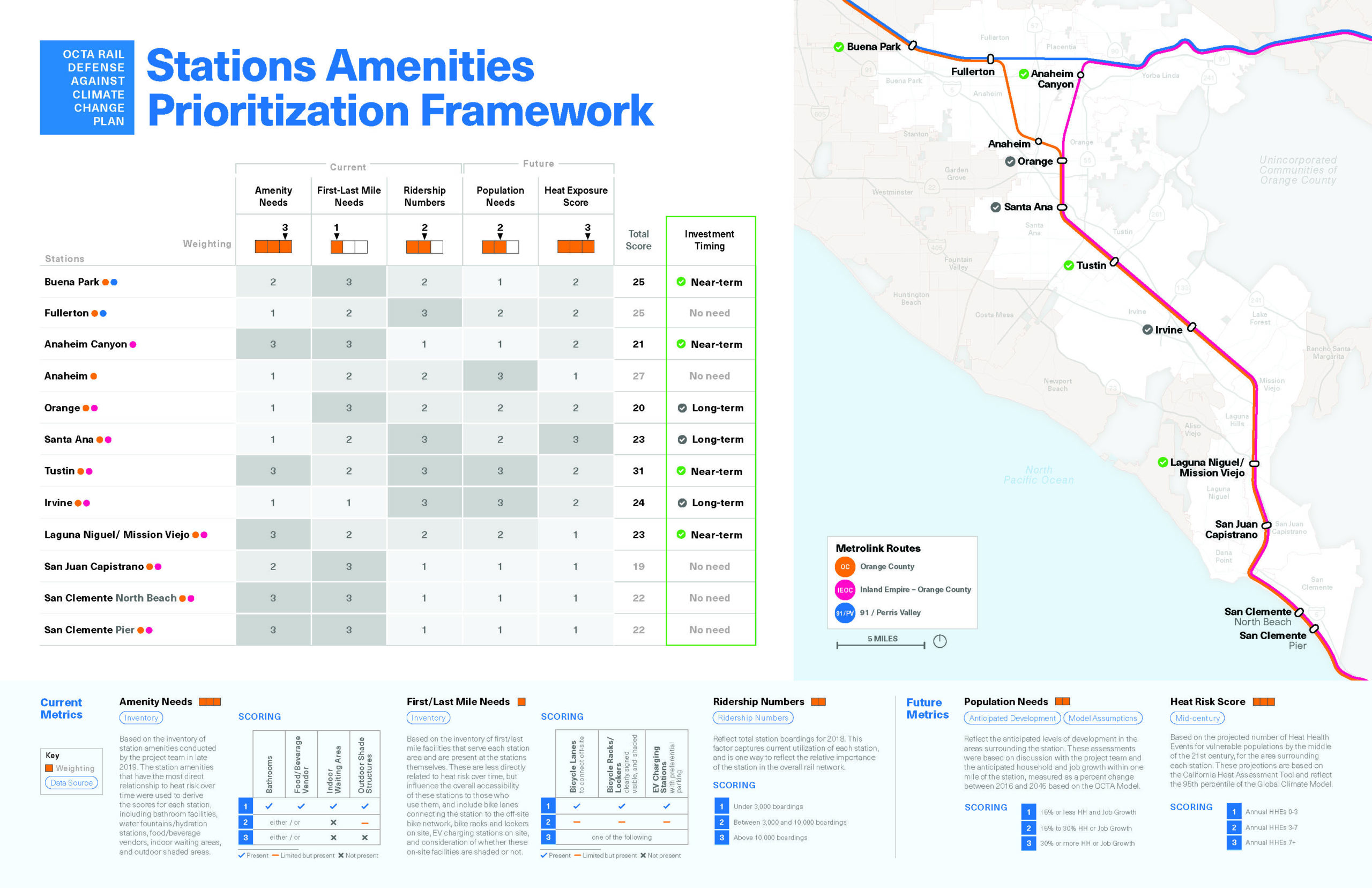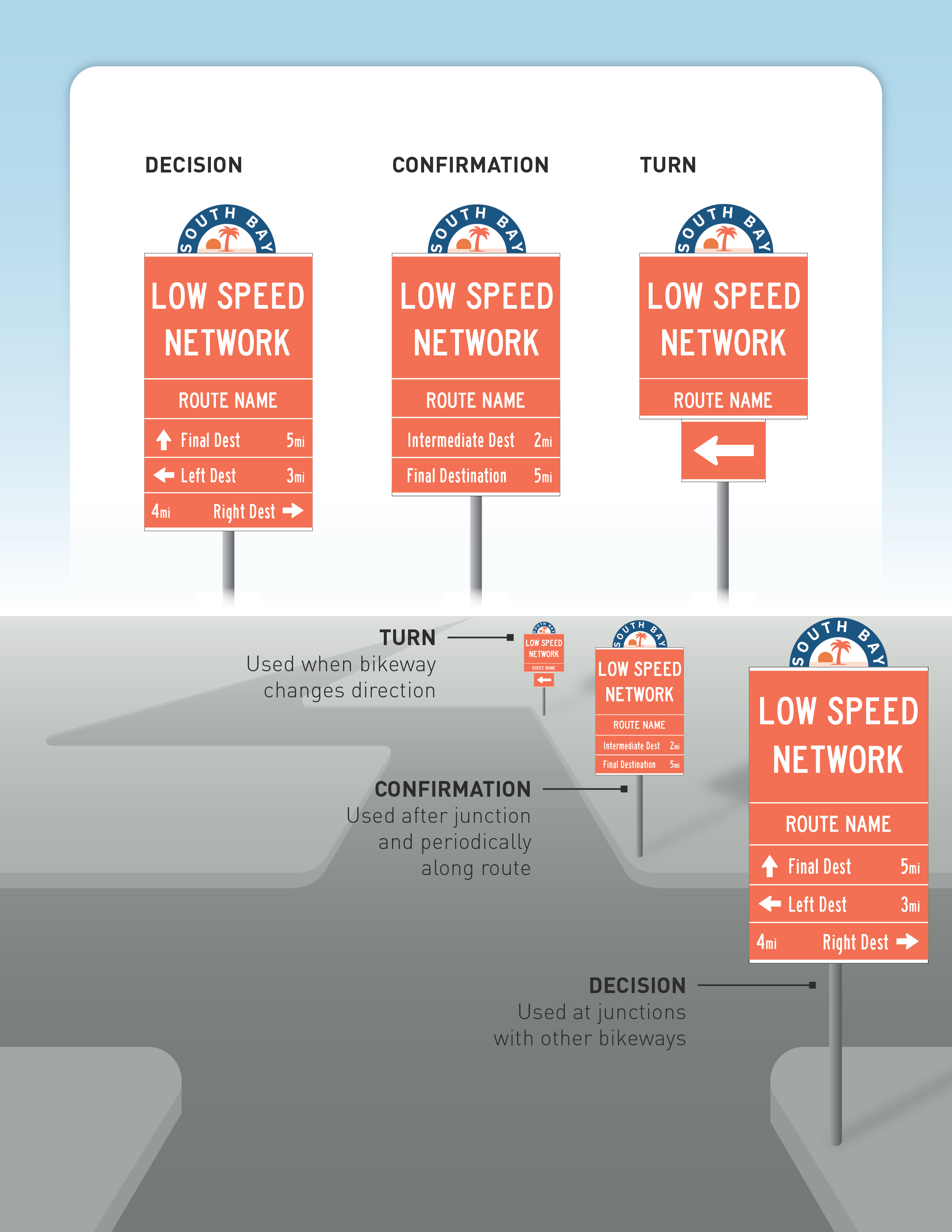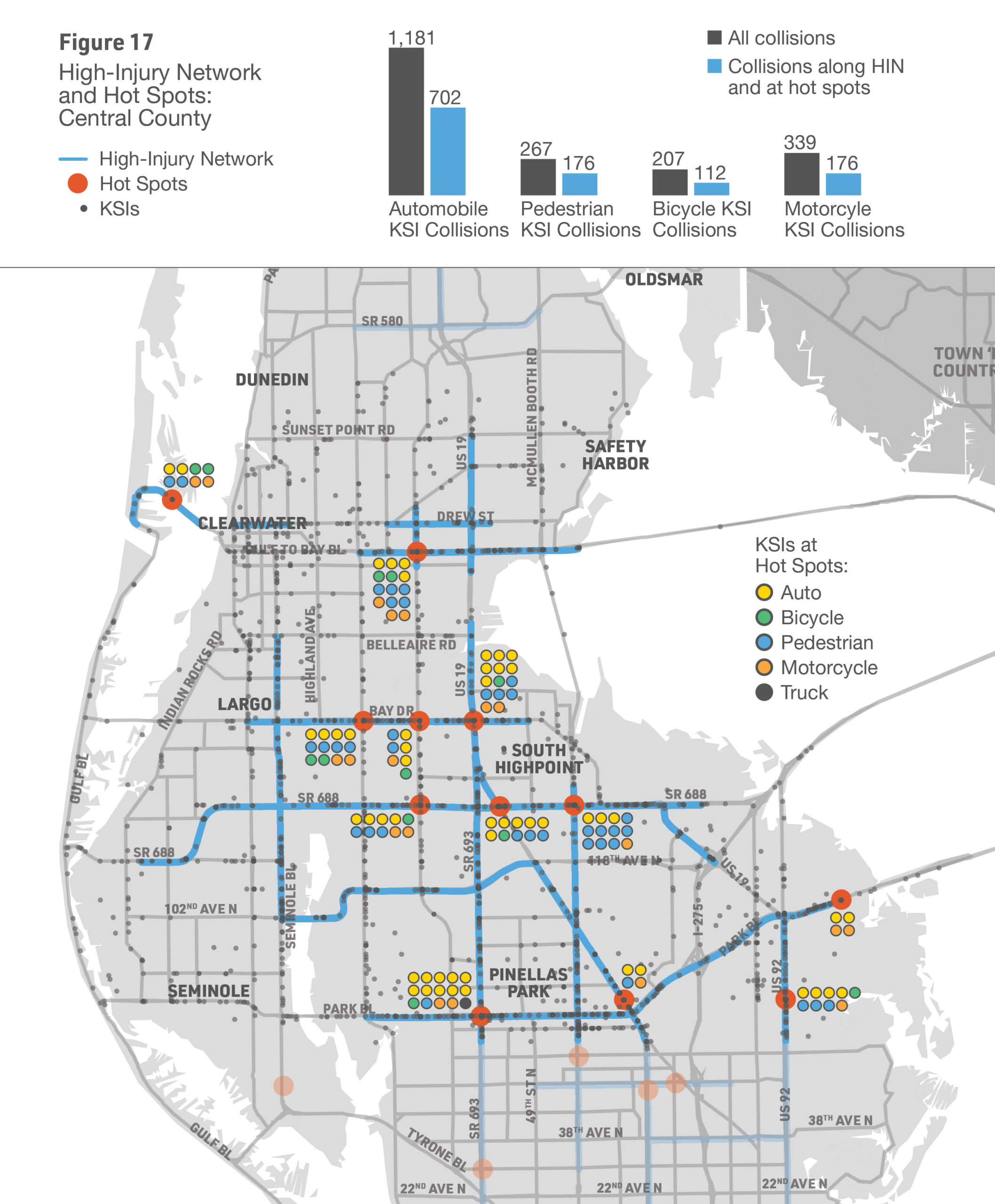Safer Today, Stronger Tomorrow
Safe Systems Supporting Long-Term Resilience
Communities are prioritizing safety across all transportation modes and making our transportation networks safer for all. How can we ensure near-term safe solutions are resilient for the future? What happens when the goals for now and the goals for the future are in conflict? How can planning engage both goals, and what types of projects, policies, and programs can ensure one or both goals may be reached without impeding the other? We’ve explored those questions along with our clients in some recent safety projects and discovered the importance of looking at both types of goals—then finding solutions that bring them together and endure.
How can we make a facility safer for those who use it today?
This question may be addressed by looking at collision data, evaluating the built environment, and observing human behavior. Solutions take the form of projects, policies, and programs that improve the conditions underlying the safety issues.
How do we ensure a facility will be available (and safe) for those who will use it in the future?
We can observe today how a facility is performing; we cannot precisely predict how it will operate in the future. However, we look to climate change data, growth projections, demographic shifts, and expected changes in mobility to understand how the community might change in the future, evaluate the resilience of our infrastructure in the face of these changes, and observe how people have responded to disruptions in the past. As with present-day approaches, solutions often take similar forms for future planning: projects, policies, and programs that are expected to serve future needs.
A people-focused Safe System approach considers vulnerabilities today and in the future. Recently adopted as a priority by agencies such as FHWA, Caltrans, the City of Philadelphia, and the Washington State Department of Transportation, Safe System is a traffic safety framework emphasizing shared responsibility and a proactive approach where death and serious injury are recognized as unacceptable costs of travel on our roads.
Many of the solutions presented through this framework focus on right-sizing transportation infrastructure, encouraging people to drive at safer vehicle speeds, and building out facilities that support mobility for people who walk and bike. Some of these solutions may seem to be in conflict with the needs of tomorrow, whether that is due to increasing populations, denser development, or more intense climate risks (such as heat, floods, and wildfire) that seem to encourage or even necessitate auto travel.
However, with careful planning, communities are making areas safer and building in resiliency for the long-term needs of the future. Examples of these different approaches include the following:
Improving emergency response times and clear evacuation routes through flexibility in design and materials, which can reduce a project’s cost and enable quicker implementation.
Phased Projects
Preparing for ongoing climate change with phased projects and climate-related implementation triggers, accounting for a changing context in the environment and built environment.
Redundancy
Planning for roadway safety, even in extreme weather events, by building redundant and forgiving systems: if one option fails, other options remain available and viable for all users.
Carbon Emission Reduction
Shifting toward low-carbon transportation options, such as walking, neighborhood electric vehicles, transit, and e-bikes, through supportive safety improvements and separation of high-speed and low-speed travelers.
Coordinated Engagement
Coordinating safety and resilience at a regional level through a Municipal Planning Organization (MPO)-led planning process that engages local communities and extends across jurisdictional lines.
Equity
Creating more equitable safety solutions through planning that prioritizes communities and people most vulnerable to roadway safety issues and those most in need of support under a range of “disrupted” future conditions. Similarly, comprehensive evacuation planning accounts for a variety of needs, including the location patterns of those who don’t have access to a vehicle, larger households with more people than seats in their household vehicles, and those who may choose to stay during an evacuation event because the risks of leaving exceed the risks associated with staying.
“This Action Plan is an important step to change how we approach safety and planning in Pinellas County. No one should be killed on our roadways. No loss of life is acceptable regardless of how people travel.”
Dave Eggers, Pinellas County Commissioner
The Orange County Transportation Authority in Orange County, California wants to ensure its transit network will remain safe and comfortable despite an increase in heat due to ongoing climate change. They are now using a prioritized framework for station improvements over time based on current and future conditions. View the public plan.
The South Bay Cities Council of Governments (SBCCOG) in California sought to create a safe network for traveling by low-speed micromobility options. They now have a Local Travel Network for all forms of mobility connecting people safely from place to place.
Pinellas County, Florida needed to create a unified approach to traffic safety that extended across jurisdictional lines. They have produced a Regional Vision Zero Action Plan, aligned with the Safe System approach, and a countywide high-injury network.
“There is a need to dramatically increase the use of electric vehicles and to convert carbon vehicle miles traveled (VMT) to zero emission VMT as quickly as possible. The United Nations recently warned that greenhouse gas emissions must be reduced by 50% before 2030 to keep the earth from becoming uninhabitable before the end of the century. The Local Travel Network is the infrastructure for the lowest-cost electric vehicles that satisfy the mobility needs for 70% of the daily trips taken by South Bay residents. Fast action is necessary.”
Wally Siembab, SBCCOG Research Director
Planning for safety across all modes in communities now strengthens the transportation networks of today and can save lives. When we plan for transportation safety futures, we pave the way for that safety to remain and strengthen as a community grows and changes and as generation after generation travels within it. In seeking innovative and effective solutions for these two goals to intersect and work in continuity during the planning process, we develop safer, more livable communities for today, tomorrow, and beyond.
Fehr & Peers is actively working with clients to address these questions and internally funding many R&D efforts through our Safety, Climate Change & Resilience, and Equity Discipline Groups. If you are interested in exploring ways to build safety and resiliency into your planning efforts, contact us today.




